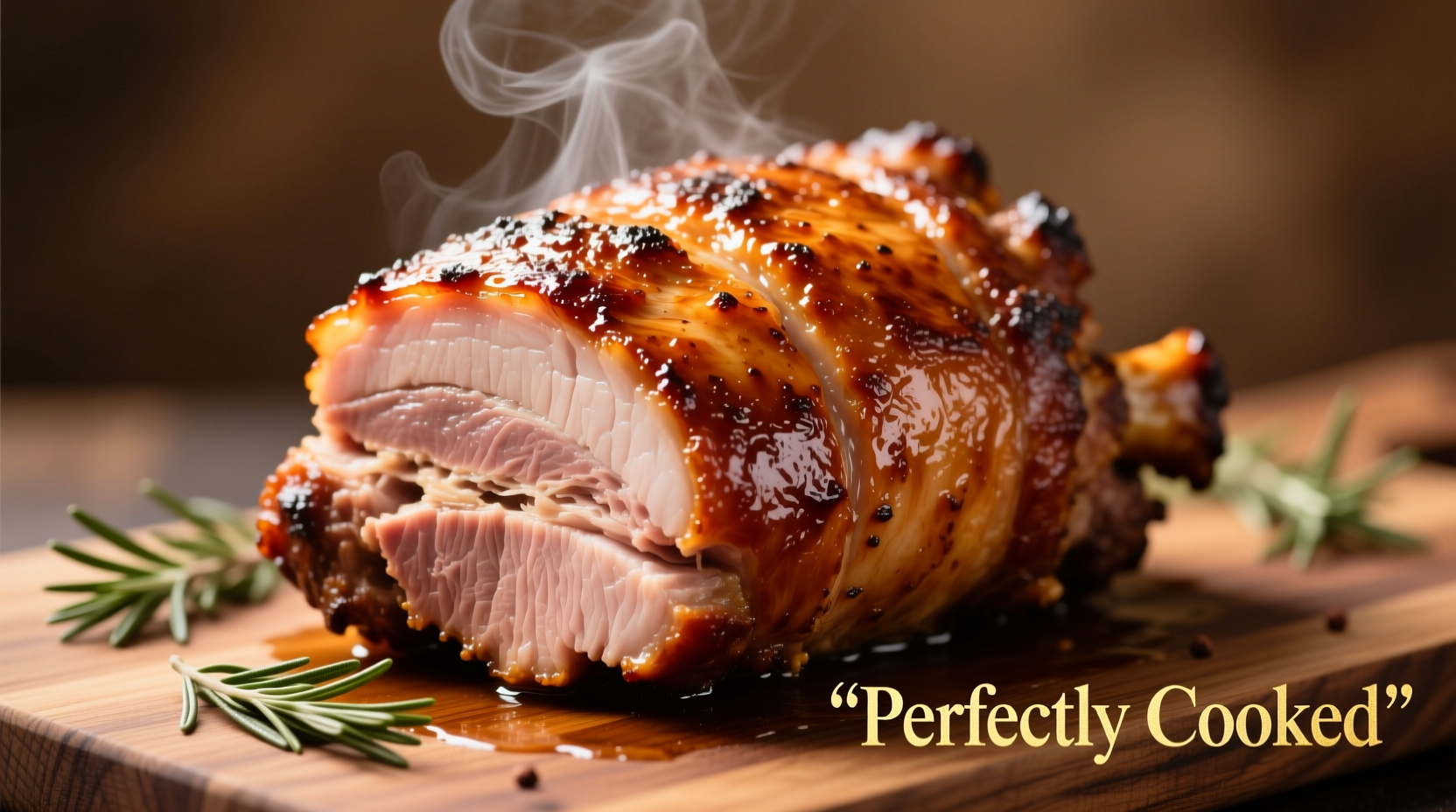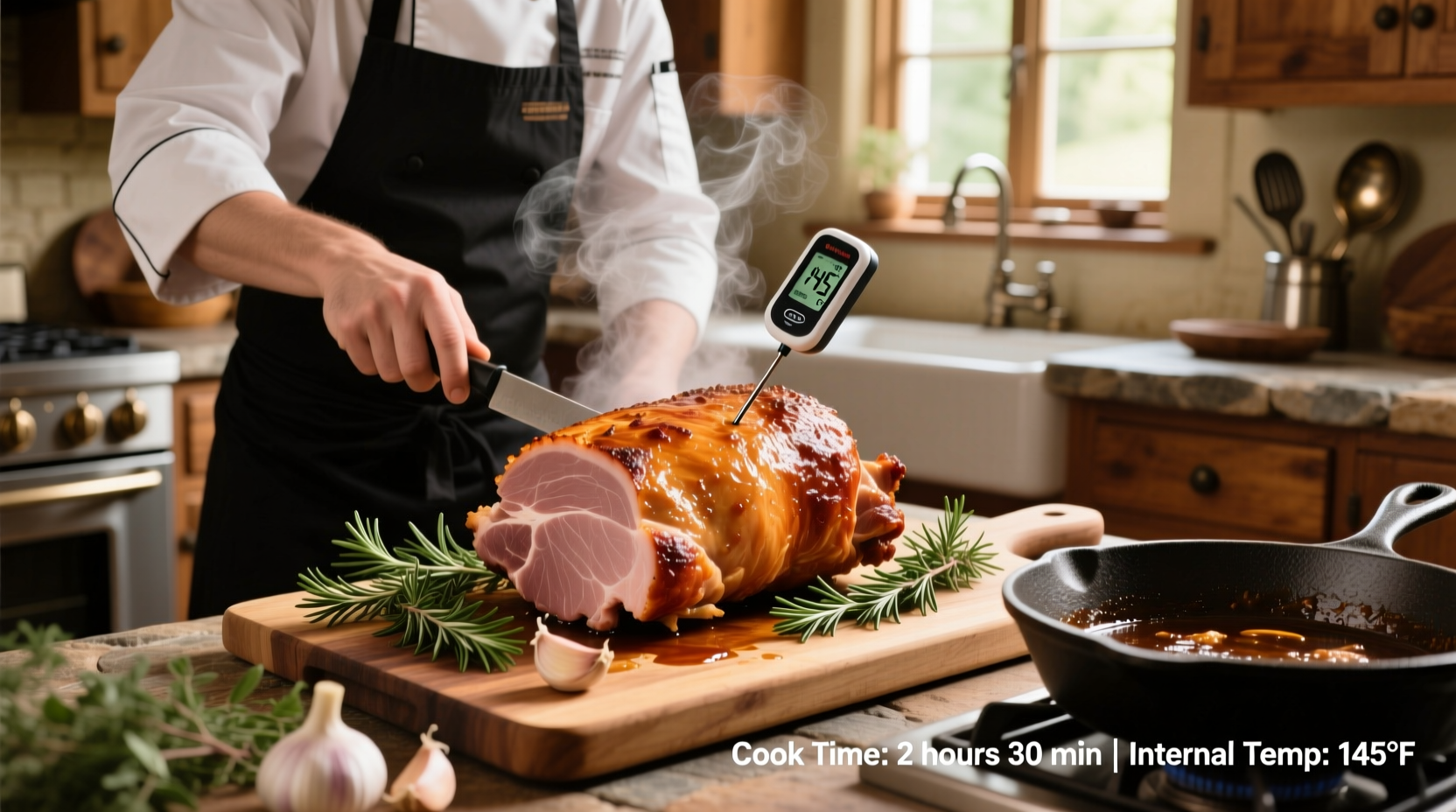Getting pork roast timing right separates satisfactory meals from exceptional ones. Many home cooks still operate under outdated guidelines that recommended cooking pork to 160°F—a practice that often resulted in dry, tough meat. Modern food safety standards have evolved, and understanding these changes transforms your cooking results.
The Science Behind Perfect Pork Roast Timing
Today's pork is raised differently than decades ago, allowing for safer consumption at lower temperatures. The USDA updated its recommendations in 2011, lowering the safe internal temperature from 160°F to 145°F with a 3-minute rest period. This change reflects improved farming practices and food safety understanding.
| Pork Roast Weight | Recommended Cooking Time | Target Internal Temperature |
|---|---|---|
| 2-3 pounds | 40-75 minutes | 145°F (63°C) |
| 3-4 pounds | 60-100 minutes | 145°F (63°C) |
| 4-5 pounds | 80-125 minutes | 145°F (63°C) |
| 5-6 pounds | 100-150 minutes | 145°F (63°C) |
This cooking time chart provides baseline guidance, but several factors affect actual cooking duration. Your specific oven's calibration, the roast's starting temperature, and whether you've seared the meat first all influence timing.
Your Step-by-Step Pork Roast Cooking Journey
Preparation Phase: Setting Up for Success
Remove your pork roast from the refrigerator 30-60 minutes before cooking. This crucial step allows the meat to reach room temperature, promoting even cooking. Season generously with salt, pepper, and your preferred herbs. For enhanced flavor development, consider a simple dry brine: rub 1 teaspoon of kosher salt per pound of meat and refrigerate uncovered for 12-24 hours before cooking.

Cooking Phase: Precision Timing in Action
Preheat your oven to 325°F (163°C). Place the roast on a rack in a roasting pan, fat side up. Insert an oven-safe meat thermometer into the thickest part, avoiding bone. Cook according to the weight-based timing guidelines, but never rely solely on time. The only reliable indicator is internal temperature.
For those using convection ovens, reduce cooking time by approximately 25% while maintaining the same temperature setting. The circulating hot air cooks food more efficiently, requiring closer monitoring.
Doneness Verification: Beyond Guesswork
When your roast approaches the target temperature (around 135-140°F), begin checking every 5 minutes. The temperature will continue rising during resting. Consider these visual indicators alongside thermometer readings:
- Juices run clear, not pink
- Meat feels firm but yielding when pressed
- Thermometer shows consistent reading in multiple spots
Resting Phase: The Critical Final Step
Remove the roast when it reaches 140°F—it will continue cooking to 145°F during resting. Tent loosely with foil and rest for 10-15 minutes (3 minutes minimum for safety). This allows juices to redistribute, preventing dryness when carving. Cutting too soon releases precious moisture onto your cutting board.
Avoiding Common Pork Roast Mistakes
Many home cooks make these critical errors that compromise results:
- Overcooking based on old guidelines - Cooking to 160°F+ dries out modern pork
- Skipping the rest period - Causes up to 40% moisture loss when carving immediately
- Relying on color alone - Pork can be safe at light pink stages
- Not using a thermometer - Time estimates vary too much for reliable results
According to USDA Food Safety and Inspection Service data, proper thermometer use reduces foodborne illness risks by 65% while improving culinary results. Their research confirms that 145°F with 3-minute rest achieves both safety and optimal texture (USDA FSIS).
Special Considerations for Different Roast Types
While the basic timing principles apply broadly, specific roast types require slight adjustments:
- Pork loin roast - Leaner cut requiring precise timing to prevent dryness
- Pork shoulder roast - Benefits from lower temperature (275°F) and longer cooking for connective tissue breakdown
- Bone-in roasts - Cook slightly faster than boneless equivalents of same weight
- Sear-finished roasts - High-heat searing before roasting reduces overall cooking time by 10-15%
For thicker cuts exceeding 3 inches, consider the reverse sear method: cook at 225°F until reaching 125°F internally, then finish with high-heat sear. This technique provides exceptional edge-to-edge temperature control.
When Timing Varies: Understanding Context Boundaries
Cooking duration isn't absolute—several contextual factors affect timing:
- Oven temperature accuracy (use an independent oven thermometer)
- Roast shape (uniform thickness cooks more evenly)
- Starting temperature (chilled vs. room temperature)
- Rack position (center rack provides most even heat)
- Pan type (dark metal vs. glass affects heat transfer)
Professional kitchen tests show that identical roasts can vary by 15-20 minutes in cooking time across different home ovens. This variability underscores why temperature monitoring trumps strict timing.
Perfect Pork Roast: Your Path to Culinary Success
Mastering pork roast timing transforms an ordinary meal into something extraordinary. By understanding the relationship between weight, temperature, and resting time, you'll consistently produce tender, flavorful results. Remember that modern pork requires less cooking time than historical recommendations, and always verify doneness with a reliable thermometer rather than relying solely on cooking duration.











 浙公网安备
33010002000092号
浙公网安备
33010002000092号 浙B2-20120091-4
浙B2-20120091-4